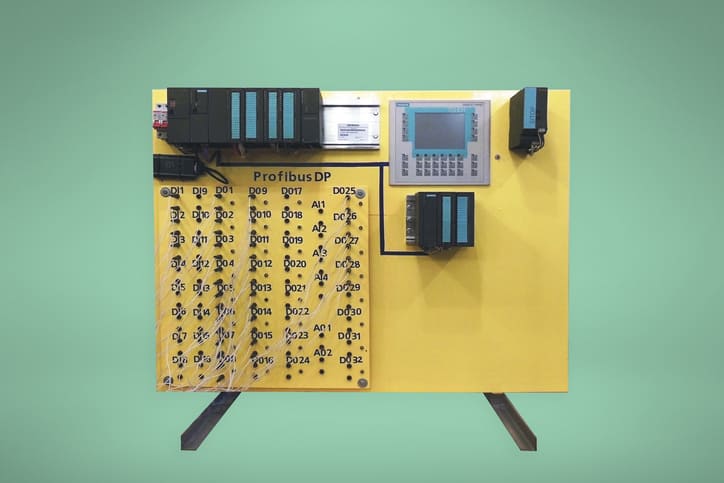Abstract
Content
Introduction
1. Theme urgency
2. The purpose and tasks of the research
3. Current results of the work
Conclusion
Literature
Introduction
When implementing traffic control actions, a special role is played by the introduction of technical means: road signs and road marking, traffic lights, road barriers and guide devices.
At the same time traffic light regulation is one of the main means of ensuring traffic safety at intersections. The number of intersections equipped with traffic lights in the world's largest cities with a high level of motorization is constantly increasing. In some cases it reaches the ratio of one traffic light object for 1.5-2 thousand residents of the city.
Traffic is a complex, time-changing system. The system is a set of relationships between moving and stationary vehicles controlled by people and pedestrian flows. Each object of the system pursues its own specific goals when driving on the road and strives to carry them out with minimal time loss and sufficient degree of safety.
The main point of regulation is to require, prohibit and recommend certain actions to drivers and pedestrians in the interests of speed and safety. It is carried out using the “Traffic regulations”, a set of technical means, administrative actions of traffic police officers.
Technical means of traffic organizing for their intended purpose can be divided into two large groups. The first category includes technical means that directly affect traffic and pedestrian flows in order to form their necessary parameters. These are road signs, road markings, traffic lights, and guide devices.
The second group includes tools that ensure the operation of the first group of tools according to the specified algorithm. These are road controllers, transport detectors, means of processing and transmitting information, equipment for control points of the automated traffic control system.
1. Theme urgency
The growth of the car fleet and traffic volume leads to an increase in traffic intensity that results in a transport problem in cities with historically developed buildings. Traffic delays are increasing, queues and obstructions are forming, which causes a decrease in the speed of communication, unjustified fuel overspending and increased wear on vehicle components and assemblies. The situation can be improved by a set of measures related to improving traffic flow control in the city — the introduction of computerized automatic traffic control systems on the city's road network.
Road safety and efficiency of transport and pedestrian traffic control are largely determined by the quality of traffic control, reliability and fault tolerance of software and hardware of traffic control systems. Therefore, the development of traffic control principles and traffic control systems, the need to use modern communication and control technologies is a very urgent problem at the present time.
2. The purpose and tasks of the research
The purpose of the research is to improve the efficiency of safe road traffic control, minimize congestion, reduce fuel consumption and exhaust gas emissions into the environment, as well as generate statistics on traffic flow parameters by developing an intelligent traffic control system.
The tasks of the research are to develop an intelligent traffic lights control system that can operate both in automatic and manual mode with fixed and variable phase durations, collect information about the road situation and display it in a convenient form. The complex of technical means of the system must be sufficient to perform all automated functions of the ACS.
3. Current results of the work
To implement the developed ACS, taking into account the formulated control and management functions, a block diagram of the traffic light control system is proposed, which is shown in figure 3.1.

Figure 3.1 — A block diagram of the ACS
The system is controlled by a programmable logic controller (PLC). Since sensors and actuators are spaced apart, 5 remote I/O stations are used to collect input and transmit output signals. The total length of the system in this case should not exceed 10 km. The maximum length of connections between the distributed I/O station and sensors with actuators is 600 m.
At each distributed I/O station, as well as on the PLC, it is planned to install 7 discrete signal output modules for connecting actuators in the form of traffic lights, and at stations 2, 4 and PLC — also discrete signal input modules to connect transport detectors.
A human-machine interface is supposed to be connected to the PLC for manual control and displaying the current state of the system.
For the technical implementation of the traffic light control system, it is proposed to use equipment manufactured by SIEMENS. The following is a list of elements present in the system:
1. PS 307 power supply;
2. CPU 313C-2 DP central processing unit;
3. SM 322 Digital output module;
4. SMM 321 digital input Module (8x1 inputs);
5. Interface module to connect the ET 200M station to the PROFIBUS DP network with electrical (RS-485) communication channels;
6. ET 200M remote I/O station;
7. Human-machine interface module — OP177B PN/DP operator panel.
At the previous stage of research, a laboratory stand of the traffic control system was developed in order to organize laboratory work on the study of programmable logic controllers, as well as to create opportunities for solving problems of optimizing road regulation. This tool is planned to be used for testing new methods of road regulation and demonstrating their work. The laboratory stand covers a variety of traffic control options and can be used with controllers from various manufacturers. The general view of the stand is shown in figure 3.2.

Figure 3.2 — Laboratory Stand
The complex that implemented on the stand serves two intersections and two parking lots.
The first intersection (on the left) is equipped with two traffic lights with turn arrows, as well as a pedestrian crosswalk with a push button traffic light and an associated traffic light for cars.
At the second intersection (on the right), an adaptive traffic light control system is implemented, which can change the duration of the control phase depending on the traffic load in one direction or another. This regulation is carried out using four transport detectors that detect the presence of a car on the roadway in each direction. There are four transport and one pedestrian traffic lights at this intersection. Transport detectors for fixing cars on the stand are represented by buttons to simplify the technical implementation.
The laboratory stand is equipped with a multi-purpose indicator that can be used to display the duration of the traffic light phase or the number of cars in the parking lot.
The basic set of equipment required for the operation of the system is also made in the form of a stand (Fig. 3.3). It includes a programmable logic controller, power supply, I/O modules, communication module, remote I/O station, operator panel. The stands are comutated with wire connection of the corresponding terminals on the front panels of the stands.

Figure 3.3 — Control laboratory stand
At the time of writing the abstract, the work on the master's thesis is not yet finished. Further research will be devoted to the development of algorithms and the study of the possibility of using fuzzy logic and neural networks in traffic control.
Conclusion
The object of control is a technical complex for traffic light control of urban traffic flows.
The analysis of existing traffic light control systems, as well as the technical means on which these systems are based, is carried out; their advantages and disadvantages are revealed.
The concept of the system is defined and its block diagram is presented. The equipment for the technical implementation of the system is selected.
A laboratory base has been prepared for testing the developed algorithms.
Literature
1. Абрамова, Л. С. Способ повышения пропускной способности регулируемых перекрёстков / Л. С. Абрамова, В. В. Ширин // Восточно-европейский журнал передовых технологий. – 2010. – Вып. 4/3 (46). – С. 62-65.
2. Бергер, Г. Автоматизация с помощью программ STEP7 LAD и FBD / Г. Бергер. – Нюрнберг: Siemens AG, 2003. – 605 с.
3. Кременец, Ю. А. Технические средства организации дорожного движения / Ю. А. Кременец. – М.: Транспорт, 1990. – 255 с.
4. Кретов, А. Ю. Обзор некоторых адаптивных алгоритмов светофорного регулирования перекрестков / А. Ю. Кретов, И. Е. Агуреев, И. Ю. Мацур // Известия ТулГУ. Технические науки. – 2013. – Вып. 7. Ч. 2 – С. 61-66.
5. Нестеров, А. Л. Проектирование АСУ ТП : метод. пособие. Кн. 1 / А. Л. Нестеров – СПб.: ДЕАН, 2006. – 552 с.
6. Нестеров, А. Л. Проектирование АСУ ТП : . метод. пособие. Кн. 2 / А. Л. Нестеров - СПб.: ДЕАН. 2009. – 552 с.
7. Олссон, Г. Цифровые системы автоматизации и управления / Г. Олссон, Д. Пиани. – 3-е изд., перераб. и доп. – СПб.: Невский диалект, 2001. – 557 с.
8. Петров, В. В. Автоматизированные системы управления дорожным движением в городах / В. В. Петров: Учебное пособие. – Омск: Изд-во СибАДИ, 2007. 104 c.
9. Петров, И. В. Программируемые контроллеры. Стандартные языки и приемы прикладного проектирования / И. В. Петров. – М.: СОЛОН-Пресс, 2004. – 256 с.
10. Федоров, Ю. Н. Справочник инженера по АСУТП. Проектирование и разработка: учеб.-практ. пособие / Ю. Н. Федоров. – М.: Инфа-Инженерия, 2008. – 928 с.

